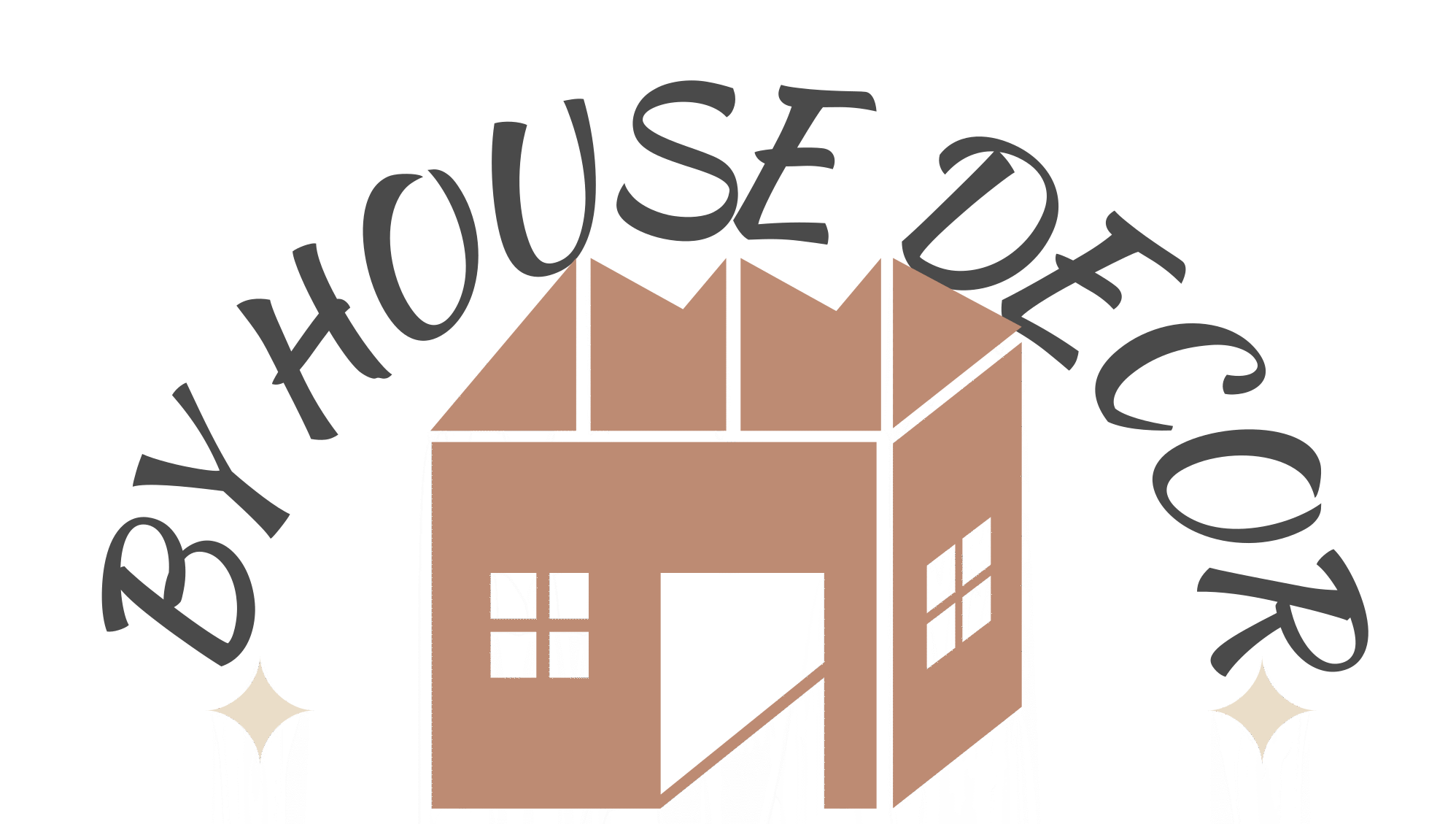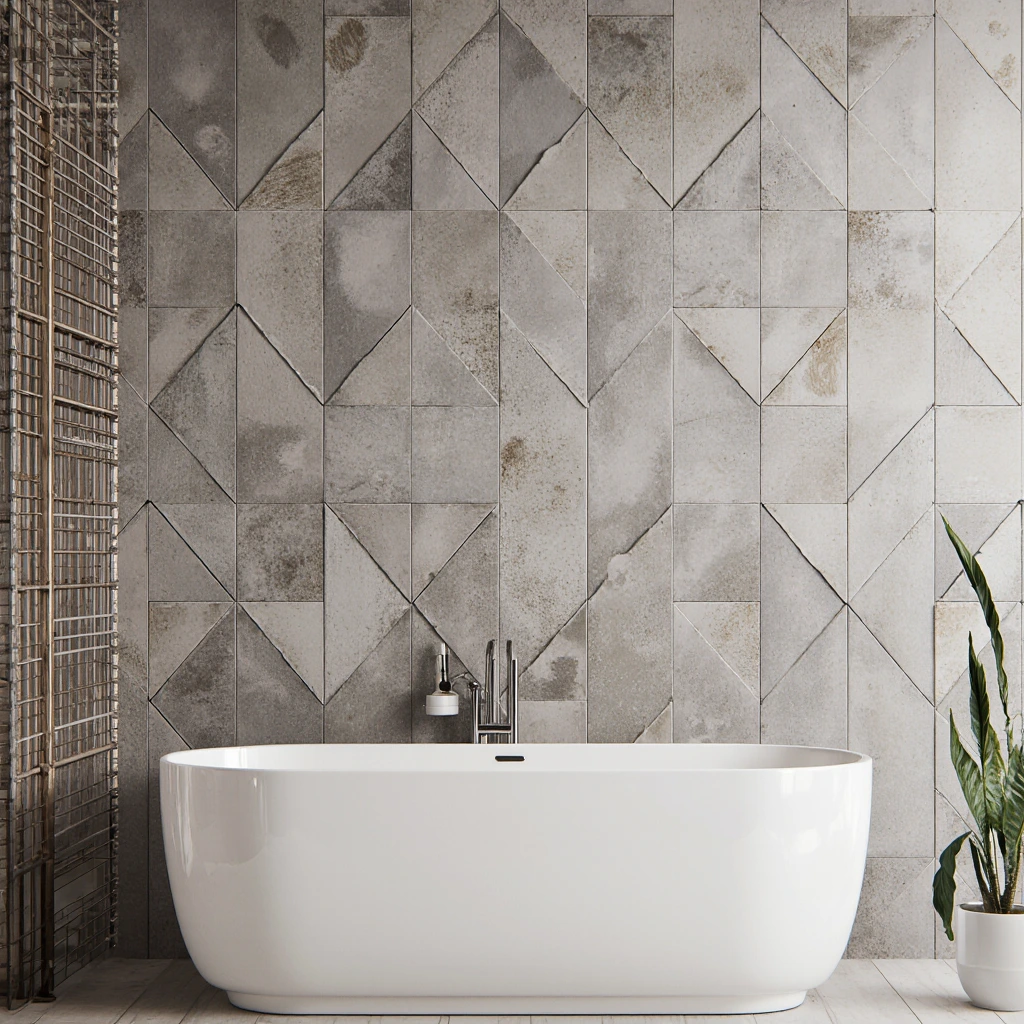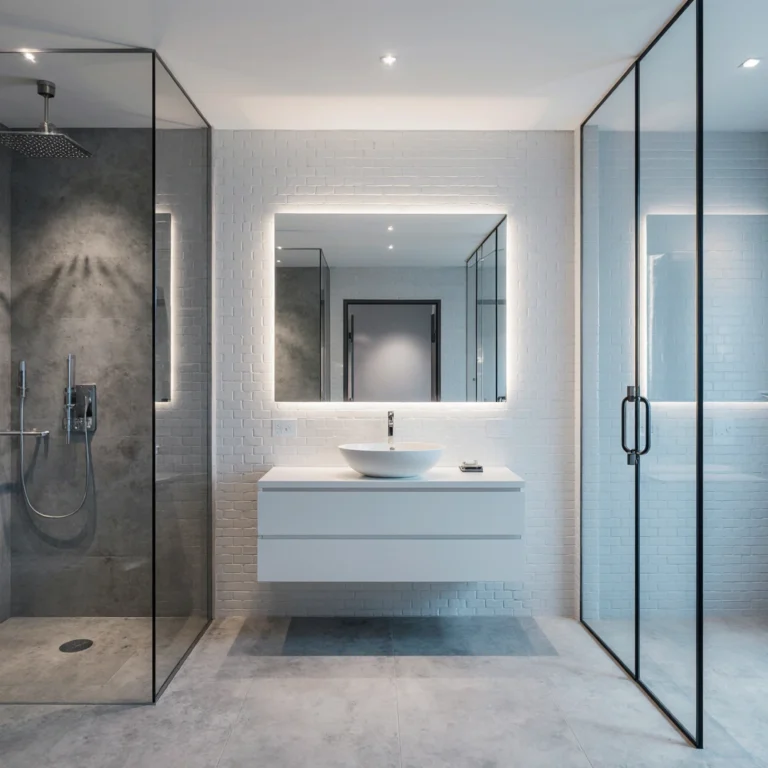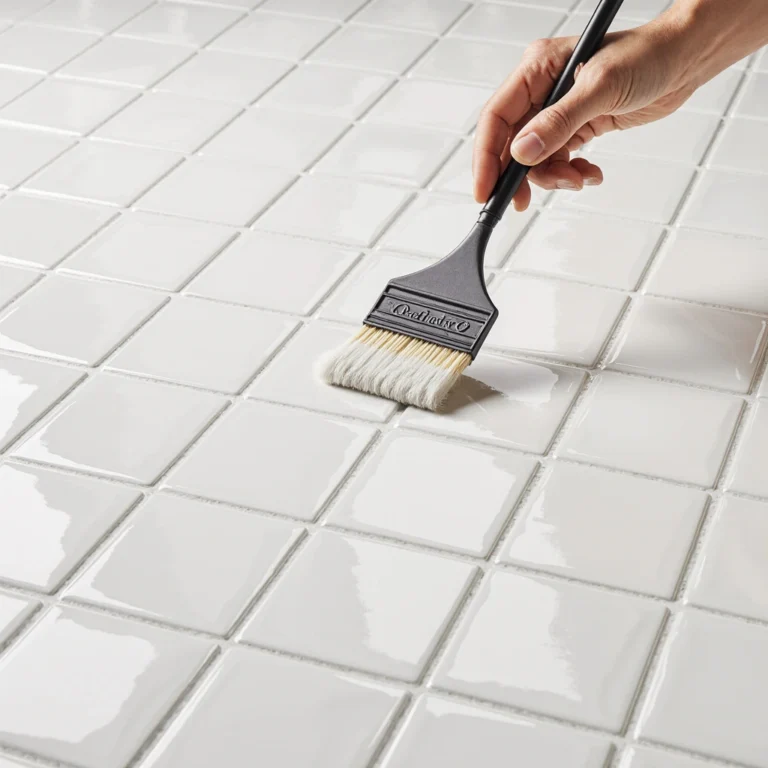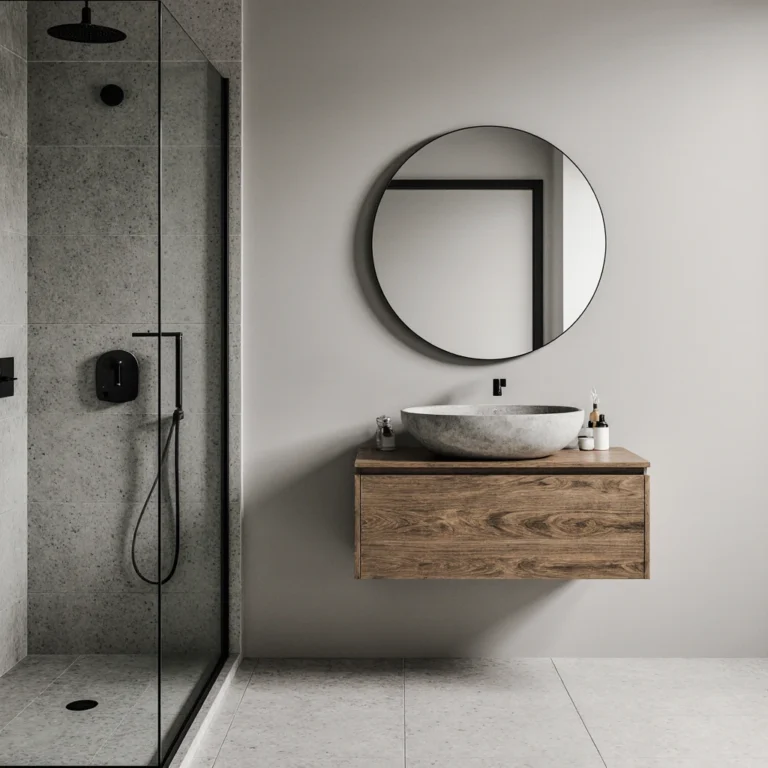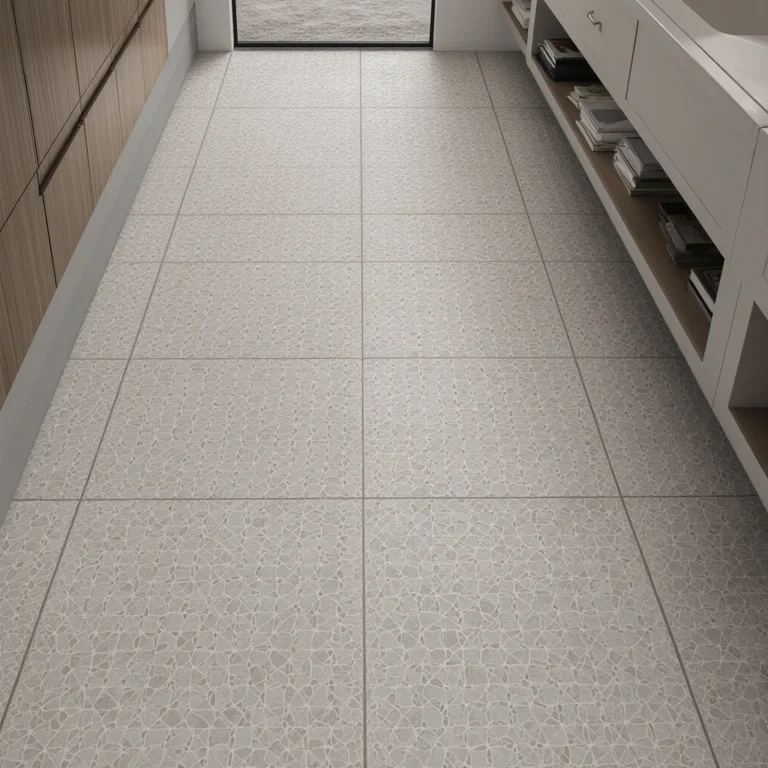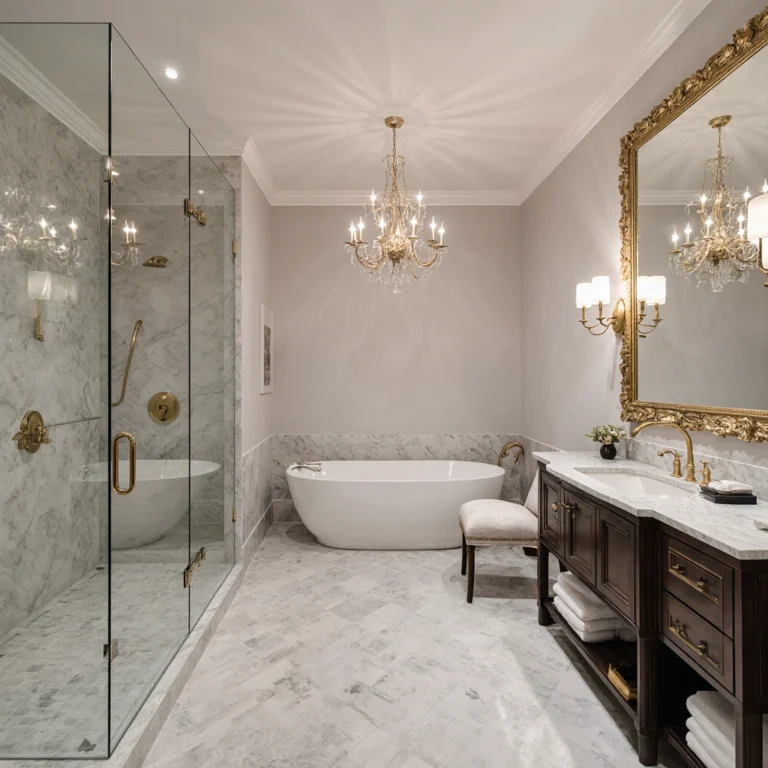The Ultimate Guide to Bathroom Accent Walls That Make a Difference
Table of Contents
Creating a stunning bathroom Accent wall can transform your space from ordinary to extraordinary. A carefully designed feature wall is a focal point that ties together your entire bathroom design, adding personality, depth, and visual interest to the smallest room in your home.
Whether you’re designing a small bathroom or a spacious master bathroom, a feature wall offers endless possibilities to express your style while maximizing your design budget. From bold tile patterns to the texture of natural stone, the right feature wall can transform your bathroom into a luxurious haven of relaxation.
In this comprehensive guide, we’ll explore everything you need to know about designing, planning, and implementing the perfect bathroom feature wall that complements your space and lifestyle.
Understanding the Power of Bathroom Accent Walls
A feature wall in your bathroom serves multiple purposes beyond mere aesthetics. It creates a harmonious visual hierarchy, draws attention to specific architectural features, and can even make small spaces appear larger when executed correctly.
The careful placement of your bathroom feature wall can highlight a vanity, frame a freestanding bathtub, or provide a stunning backdrop for your shower. Unlike other rooms in your home, bathrooms present unique challenges, including humidity and limited natural light, making material selection critical for long-term success.
Research indicates that homeowners who incorporate feature walls into their bathroom renovations report 23% higher satisfaction rates with their overall design than those who use uniform wall finishes throughout the space.
Design Strategies for Different Bathroom Sizes
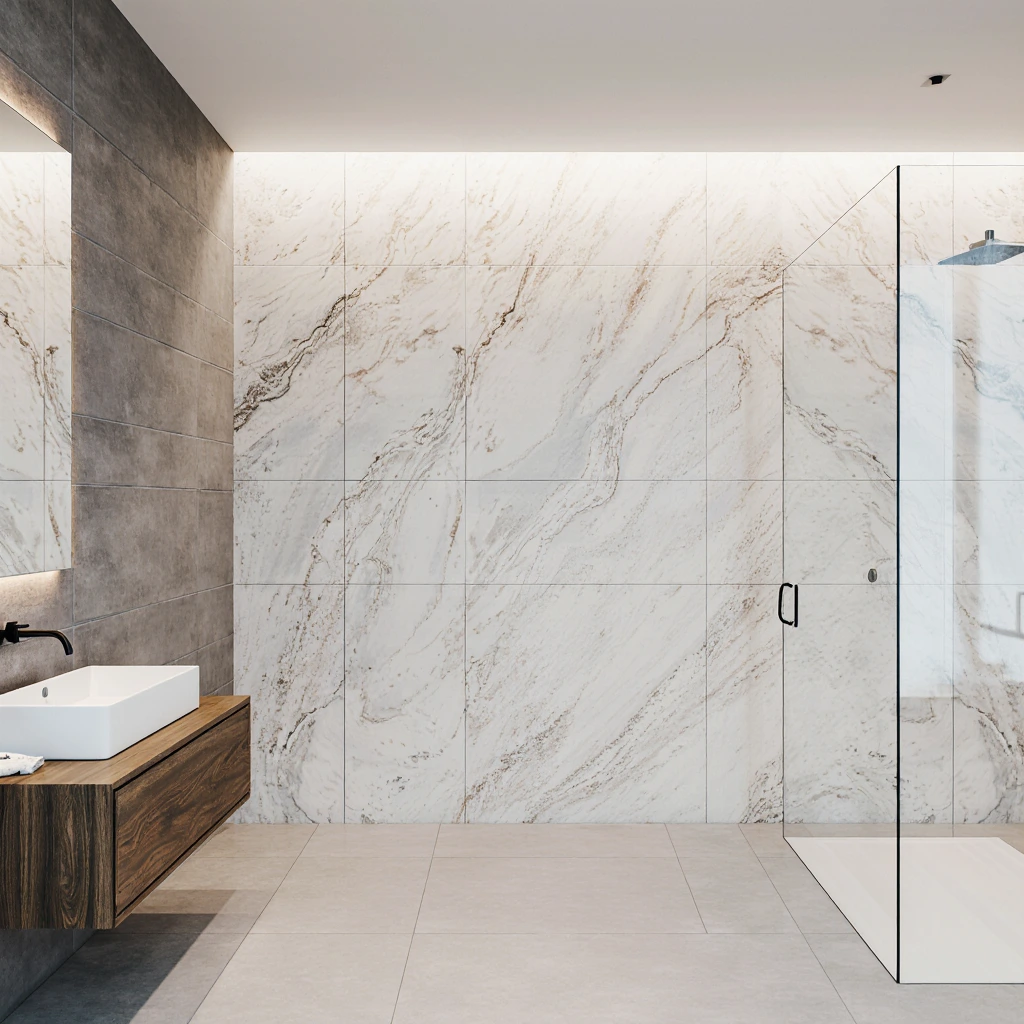
Accent Walls for Small Bathrooms
In small bathrooms, a feature wall strategy should focus on creating the illusion of space while adding visual interest. The wall behind the vanity is usually best suited as a feature wall in small bathrooms, as it’s the first thing you see upon entering the space.
Consider these techniques for small bathrooms:
Vertical Focus: Use vertical tile patterns or wood planks to draw the eye upward, making your ceiling appear higher than it actually is.
Light Reflection: Use materials with a sheen or smooth texture that reflects light, such as subway tiles with beveled edges or natural stone with a polished finish.
Focus on a Single Wall: Limit your decorative accent to a single wall to avoid overwhelming the space while maintaining a strong design touch.
Feature Walls for Large Bathrooms
Spacious bathrooms offer more flexibility for accent walls. You can choose bolder colors, textures, and patterns, given the larger visual space.
Effective large bathroom strategies include:
Multiple Feature Zones: Create separate feature zones behind the vanity and in the shower or bathtub area using coordinating and distinct materials.
Distinctive Materials: Use larger tiles, natural stone panels, or wallpaper with distinctive patterns that enhance small spaces.
Architectural Integration: Use your feature wall to highlight architectural features such as alcoves, built-in niches, or window surrounds.
Smart Storage Solutions to Complement Accent Walls
Your bathroom’s accent wall can serve two functions by incorporating practical storage elements that maintain the design’s visual appeal. This approach enhances your space while keeping the accent wall a primary feature.
Incorporating Built-In Outlets
Outlets built into your accent wall provide practical storage for bathroom essentials while highlighting your chosen materials. Plan the placement of outlets during the design phase to ensure proper waterproofing and structural support.
The most effective outlet designs use the same accent material on the interior surfaces, creating a cohesive look that appears intentional rather than merely an afterthought.
Floating Shelves and Vanity Items
Open shelving on feature walls adds visual layers while providing storage space. Choose shelving materials that complement the vanity wall rather than compete with it—natural wood over stone, or sleek metal over textured tile.
Place floating shelves at varying heights to add interest and accommodate various storage needs, from everyday bathroom essentials to decorative accessories.
Vanity Incorporation Strategies
When your vanity wall serves as a feature, consider integrated storage solutions such as:
Medicine cabinets with frames that match the wall material, built-in towel cabinets surrounding the vanity, and hidden storage behind accent panels that maintain visual cohesion.
Materials and Finishes: Durability and Elegance
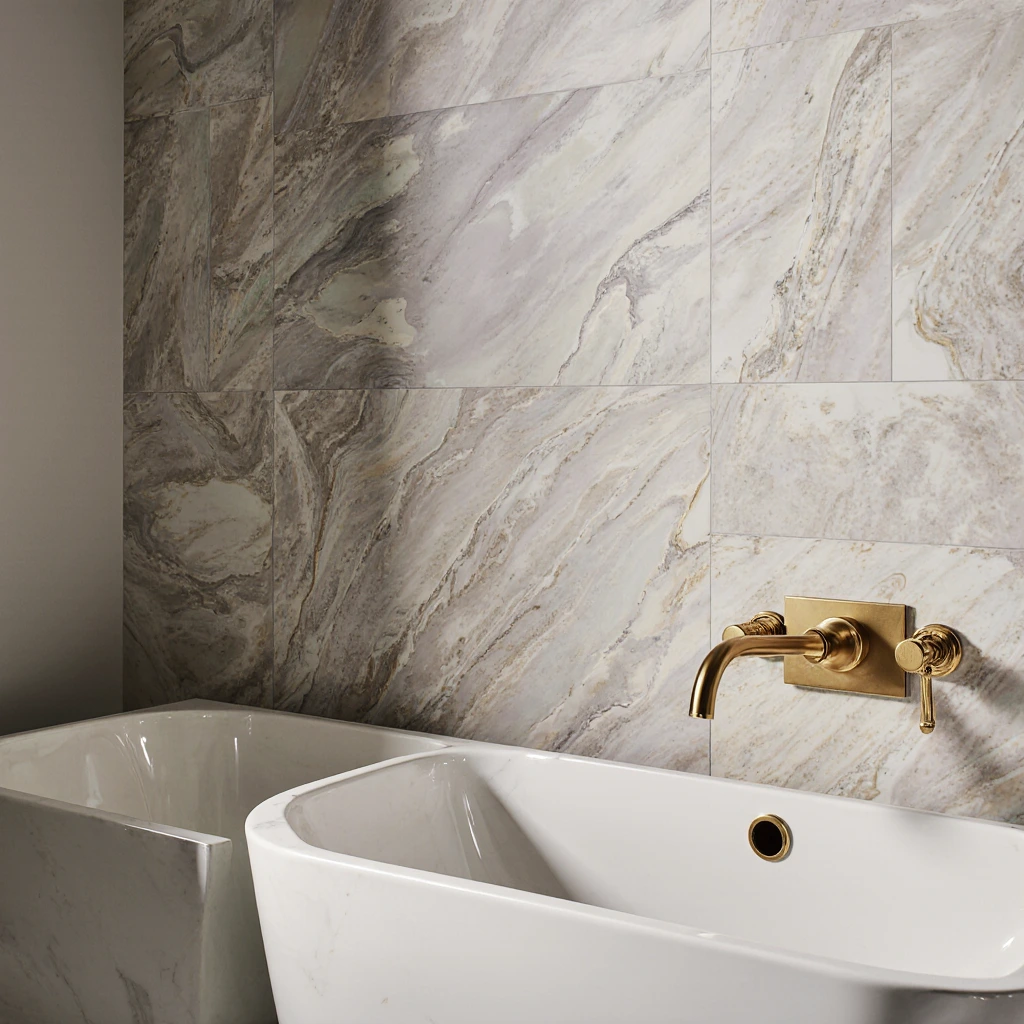
Choosing the right materials for your distinctive bathroom wall requires balancing aesthetic appeal with practical considerations, such as moisture resistance, maintenance requirements, and longevity.
Tile Options to Suit All Tastes
Natural Stone: Marble, travertine, and slate exude timeless elegance, but require proper insulation and maintenance. These materials are ideal for use behind freestanding bathtubs or as feature walls in bathrooms.
Ceramic and Porcelain: Modern manufacturing techniques have resulted in tiles that mimic natural materials, while offering superior durability and water resistance. Large-format porcelain tiles create a seamless, contemporary look.
Glass Tile: They reflect light beautifully in small bathrooms and are available in countless colors and finishes. Glass tiles are particularly suitable for shower areas, due to their water-resistant properties.
Mosaic Patterns: Small-scale tiles allow for intricate patterns and color gradients that add visual interest.
Alternative Materials for Decorative Walls
Water-Resistant Wallpaper: Modern vinyl and fiberglass wallpaper creates stunning patterns and is moisture-resistant in the bathroom. They are ideal for bathrooms or areas away from direct water exposure.
Wood Treatments: Wood panels or sealed wood planks create a warm and organic decorative wall. Choose moisture-resistant species like cedar or teak, or opt for engineered wood products designed for wet areas.
Painted Finishes: High-quality bathroom paint in bold colors or with special finishes can create distinctive decorative walls at an affordable price.
Finishing Considerations
The finish of decorative wall materials significantly impacts appearance and maintenance. Matte finishes hide water spots but can be harder to clean, while polished surfaces reflect light beautifully but show off every drop.
Consider semi-gloss or satin finishes for painted accent walls, as they offer the perfect balance of durability and aesthetics in bathroom environments.
Lighting and Ventilation: Highlighting Your Feature Wall
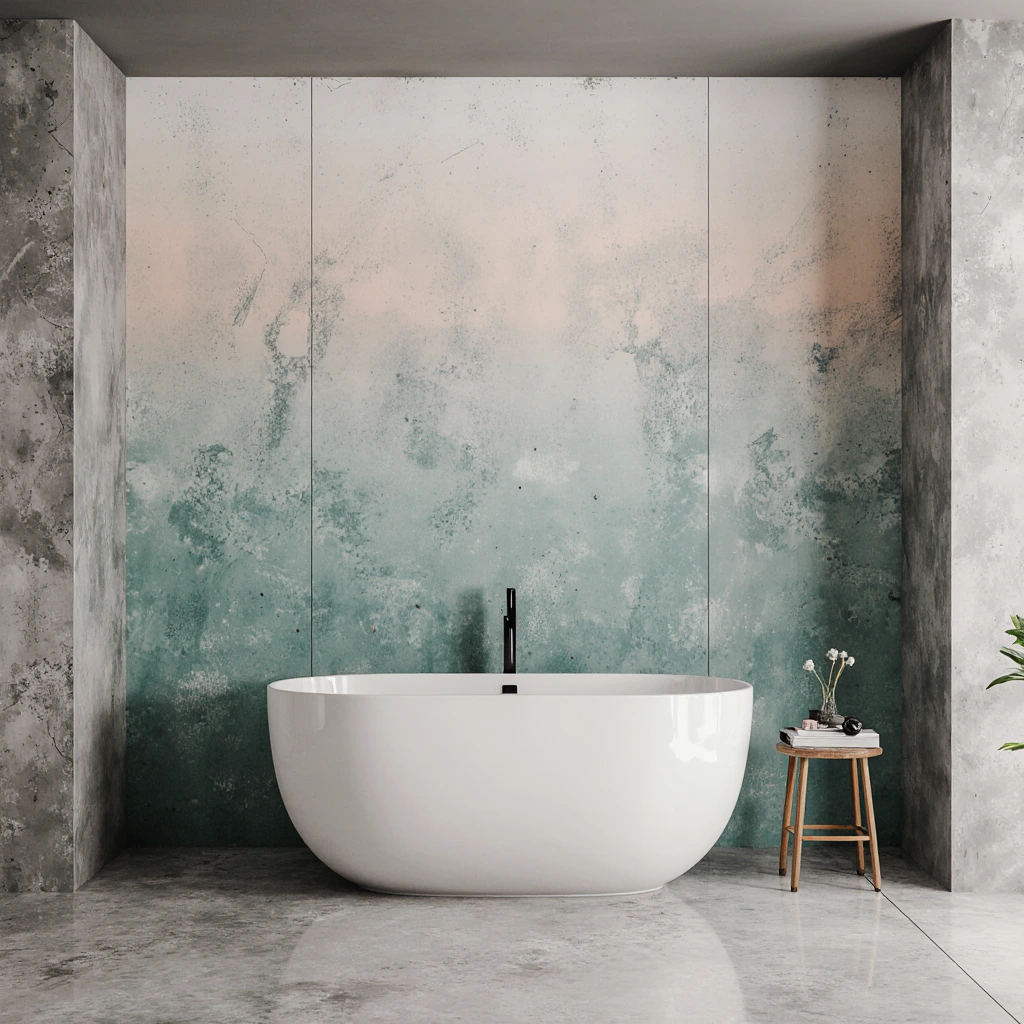
Proper lighting is essential to effectively highlight your bathroom feature wall while ensuring the space remains functional for everyday use.
Layered Lighting Styles
Task Lighting: Install accent lights that illuminate your feature wall without creating harsh shadows. Wall-mounted sconces and mirrors are particularly well-suited to textured accent walls.
Accent Lighting: LED strips behind floating vanities or within recessed recesses can add a distinctive touch to a feature wall, and are especially effective with natural stone or textured materials.
Ambient Lighting: Recessed ceiling lights should complement your feature wall rather than compete with it. Dimmable lighting controls allow you to adjust the mood and highlight different aspects of your feature wall throughout the day.
Ventilation Planning
Proper ventilation protects your feature wall by preventing moisture damage and mold growth. This is especially important for natural materials like wood or stone, which can be affected by moisture.
Make sure your exhaust fan’s capacity is appropriate for the size of your bathroom, typically calculated at one cubic foot per minute per square foot of bathroom space. Install vents to ensure adequate air circulation without creating direct drafts on feature wall surfaces.
Common Bathroom Feature Wall Mistakes and Their Solutions
Even well-intentioned feature wall projects can fail if they are not properly planned and executed. Understanding common mistakes ensures the success of your project.
Sizing and Proportion Mistakes
Mistake: Choosing patterns or materials that are too large or small for your space.
Solution: Use the 60%-30%-10% design rule – your feature wall should represent approximately 30% of your visual space, with the dominant color/material occupying 60%, while accent colors occupy the remaining 10%.
Material Selection Mistakes
Mistake: Prioritizing appearance over function in wet areas.
Solution: Always ensure the materials you choose are designed for use in bathrooms, especially in shower areas where water exposure is frequent.
Lighting Integration Mistakes
Mistake: Planning lighting as an afterthought rather than integrating it into your feature wall design.
Solution: Plan initial electrical installations during the design phase to ensure optimal fixture placement that enhances, rather than detracts from, your feature wall.
Underestimating Maintenance
Mistake: Choosing materials that require frequent maintenance without considering long-term maintenance requirements.
Solution: Consider maintenance time and costs when selecting materials. Sometimes, spending a little more upfront on low-maintenance materials saves you money and avoids frustration down the line.
Design Trends and Timeless Styles
While following the latest trends can yield impressive results, balancing modern elements with timeless design principles ensures your bathroom’s accent wall will remain attractive for years to come.
Trending Styles
Organic Textures: Natural stone slabs, natural-edged wood, and handcrafted tiles highlight natural imperfections and variations.
Bold Geometric Patterns: Hexagonal tiles, chevron designs, and multi-scale geometric designs create visual movement.
Single Depth: Using varying shades and textures from the same color family to create sophisticated, layered looks.
Timeless Design Elements
Classic Subway Patterns: Traditional subway tiles in a herringbone pattern, vertical stacking, or classic continuous banding patterns never go out of style.
Natural Stone: High-quality marble, granite, or limestone will always add a touch of luxury and sophistication.
Neutral Color Combinations: White, gray, and earthy tones offer flexibility for changing accessories and fixtures over time.
Affordable Feature Wall Ideas
Creating a bathroom feature wall doesn’t have to be expensive. Strategic material choices and DIY options yield impressive results at varying price points.
Cost-Effective Material Options
Painting Techniques: Specialized paint finishes, such as Venetian plaster or color glaze, can create rich, textured feature walls for a great paint price and some training.
Peel-and-Stick Tiles: The quality and appearance of modern adhesive tiles have improved dramatically, offering an economical way to achieve a distinctive tile look without the need for professional installation.
Recycled Materials: Reclaimed wood, antique tile, or recycled materials can create unique feature walls with character and sustainability benefits.
DIY vs Professional Installation
Consider your skill level and time available when deciding between DIY and professional installation. Simple painted or peel-and-stick feature walls are suitable for DIY projects, while complex tile designs or structural modifications typically require professional expertise.
Maintenance and Longevity Tips
Protecting your investment in your bathroom feature walls requires understanding proper care techniques for your chosen materials.
Daily Maintenance Practices
Regular cleaning prevents the buildup of dirt that can damage the material over time. Use cleaners appropriate for your feature wall material—what works for ceramic tile may damage natural stone.
Maintain good ventilation habits by running exhaust fans during and after showering to reduce your feature wall materials’ exposure to moisture.
Long-Term Care Strategies
Schedule regular deep cleanings and maintenance based on your material needs. Natural stone may require annual sealing, while grout lines benefit from periodic cleaning and touch-ups.
Keep spare materials from installation for future repairs or touch-ups. This is especially important for custom or discontinued tiles that may no longer be available.
Conclusion
A carefully designed feature wall for your bathroom is more than just a decorative element; it’s an investment in your home’s value and your daily experience. By carefully considering space constraints, material choices, and long-term maintenance requirements, you can create a feature wall that enhances your bathroom’s functionality and expresses your personal style.
The key to success lies in careful planning, selecting high-quality materials that suit your specific circumstances, and seamlessly integrating your feature wall into your overall bathroom design. Whether you choose luxurious natural stone, modern geometric tiles, or economical paint techniques, your feature wall should feel like a natural extension of your space, not just an accessory.
Remember, the best feature wall for your bathroom is one that puts a smile on your face every time you enter and meets the demands of everyday use.
Are you ready to give your bathroom a stunning feature wall makeover? Share your thoughts on a feature wall in the comments below, or sign up for our newsletter to receive more professional bathroom design tips and inspiration delivered straight to your inbox!
Best Amazon Picks :
FAQs
Q: What is the best feature wall for small bathrooms?
A: The wall behind the vanity is usually the most suitable feature wall in small bathrooms. This wall is usually the focal point when you enter the bathroom and provides the perfect backdrop for the mirror and fixtures. Avoid using the wall opposite the entrance, as it can make the space appear smaller.
Q: Can I use wallpaper as a feature wall in the bathroom?
A: Yes, but choose wallpaper specifically designed for the bathroom. Look for moisture-resistant vinyl or fiberglass wallpaper. Avoid using plain wallpaper in areas directly exposed to water, such as the shower surround. Shower rooms and areas away from the shower/tub are ideal for feature wallpaper.
Q: How much does a feature wall typically cost in a bathroom?
A: Costs vary greatly depending on the materials and installation method. Hand-painted feature walls can cost between $50 and $200, while professional tile installation can cost between $800 and $3,000, depending on the type of tile and bathroom size. Natural stone accent walls typically cost between $1,500 and $5,000, including professional installation.
Q: Does the accent wall need to match the shower tile?
A: The accent wall doesn’t have to match the shower tile exactly, but it should complement each other. Consider using the same combination of materials (such as different styles of the same stone) or coordinating colors. The key is to create visual harmony rather than an exact match.
Q: What is the least expensive accent wall material for bathrooms?
A: Porcelain tile and high-quality bathroom paint are among the least expensive options to maintain. Porcelain resists stains and water damage and requires only regular cleaning. Painted accent walls can easily be refreshed with high-quality bathroom paint and refinished as needed.
Q: Can I install a feature wall in a rented bathroom?
A: For rental properties, focus on removable options such as peel-and-stick tiles, removable wallpaper, or painted feature walls (with landlord approval). These options allow you to customize your space while still being able to restore it to its original condition when you move in.
Q: How do I choose the right tile size for my feature wall?
A: Larger tiles (12 inches or larger) are suitable for spacious bathrooms and create a modern, coordinated look. Smaller tiles (subway or mosaic size) are better suited for narrow spaces and allow for more flexibility in pattern. When choosing tiles, consider the size of your bathroom, ceiling height, and your desired aesthetic.
